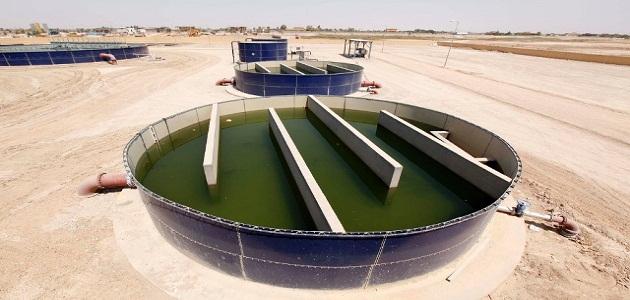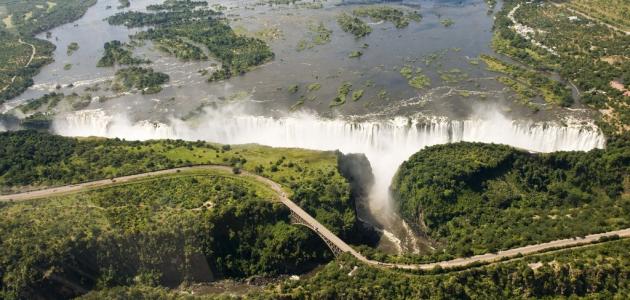energy
Energy is defined as the ability to perform work, and it has many forms, as it is classified according to its nature into kinetic energy, thermal energy, electrical energy, nuclear energy, and chemical energy. Energy exists in all bodies even if these bodies are static and do not move, in the sense that energy is latent in the body because of the nature of its composition, and wherever work exists, there must be transmitted energy and heat generated by the energy transfer process, since in any work energy is transferred in the form of To another, and to clarify this, it can be said that after the completion of a work, energy may appear in the form of mechanical or kinetic, while the heat generated from the completion of the work is thermal energy. The bow, for example, in its natural state is in a state of rest, and the energy it possesses is potential, but it has the ability to produce energy if it is pulled and then released, so the potential energy inside it is transformed into kinetic energy, and thermal energy may be generated in the form of heat from its movement. Nuclear energy is also potential energy, and this is due to the fact that it results from the formation of atomic particles present in the nucleus, and energy does not perish, but rather transforms from one form to another, it is preserved. Friction force stops, the kinetic energy is converted into thermal energy that heats the box and the ramp due to the friction that occurred.
Read also:Use of solar energyenergy resources
Energy is renewable and non-renewable sources, and the following is an overview of each of them:
sustainable energy
Renewable energy is also known as alternative energy. As for the reason for calling it renewable energy, it is because its sources are permanent and inexhaustible, such as the sun and the wind. In the name of tidal energy, and there are many renewable energy sources such as rivers through which hydroelectric power is generated, and hot springs from which geothermal energy is generated, in addition to biomass that supplies fossil fuels, and to clarify what is meant by biomass, it can be said that it is the weight or quantity of living organisms that Belong to one type of animal, or the amount of plants that belong to one type of plant or to the entire biological community, where this biomass produces a specific amount of organic matter that contains carbon during a specific period of time, and it is measured in an energy unit such as kilo joules per square meter per year.
The global consumption of renewable energy sources at the beginning of the twenty-first century was estimated at approximately 20%, and by the year 2015, the proportion of electrical energy generated from large hydroelectric power plants was estimated at 16%, and wind energy, solar energy, and geothermal energy accounted for 6%. of the total electricity generation,[XNUMX] Nuclear energy is also a type of renewable energy, as it is used to generate 10.6% of the world's electricity, according to 2015 estimates. Renewable energy sources, and alternative energy or renewable energy includes all types of energy that do not consume fossil fuels, and one of its most important features is that it is always available and is not harmful to the environment, and reduces dependence on fossil fuels.
Read also:How to use alternative energy sourcesThe following is a statement of the types of renewable energy:
- solar energy: It is considered the first type of energy used by man since ancient times, as it is the first source of energy in the world, and is used to generate light and heat, just as the sun is used by living organisms on Earth, as plants use it to make their food, as man uses it to obtain warmth, and by using photovoltaic cells extracted Solar energy, solar panels are also used to benefit from solar energy for the longest possible period, and this type of energy has many advantages that outweigh the number of defects, as the defect is limited to the inability to benefit from the sun at night, or in cold areas.
- Wind Energy: The wind began to be used centuries ago to produce energy, and the first thing it was used in was the operation of sailing ships. It was also used to move windmills to irrigate crops, pump water and light electric lights. At present, wind turbines are used to generate energy and connect it to networks, but the disadvantages of this energy made it It is limited to certain places, so it is not used near residential areas, because of the noise it causes, and the wind is used to generate energy in areas that face strong winds and not anywhere on the ground.
- geothermal energy: It is the energy that is extracted from under the ground, where under the ground there are molten rocks called magma from which heat is produced, and the temperature increases by 3 degrees for every 100 m underground, and this heat is exploited through water that makes its way into the depths of the earth, when it touches the rock it boils and steam is produced from it Which is captured by geothermal heat pumps, and this steam is used to move the turbines that activate the generators, and the United States of America is one of the most used countries for this type of energy, where most of the geothermal water reservoirs are located in the western states, and in Alaska and Hawaii, and one of its advantages is that it does not cause environmental pollution, but it is not suitable for all regions.
- hydropower: It is the energy that is produced from the moving water, and there are special hydroelectric stations that capture the kinetic energy of transporting water, and give the mechanical energy to the turbines, where these turbines convert the mechanical energy into electrical energy through generators, and many dams are built to obtain this energy, as it is considered one of the most important sources alternative energy in the world; This is because it has many advantages, as it does not cause environmental pollution, and its sources are always available.
non-renewable energy
Non-renewable energy is energy that, if it runs out, will never be renewed. Its source is fossil fuels such as coal, oil and natural gas. Carbon is the main component of fossil fuels. The long period in which fossil fuels are formed is called the carbon period. This period is estimated at 300-360 million Years, and this fuel was formed hundreds of millions of years ago, when the earth was covered with wide shallow sea trees and swamps, then these plants and algae grew over the wetlands, and the sun's rays were used to carry out the photosynthesis process, and when they died they drifted to the bottom of the sea where they were crushed there, and led The accumulation of rocks above it causes high temperatures and pressure under the ground, and these plants have turned into fossil fuels, as it is considered the most important source of energy, as it is extracted and stored in pipes to facilitate shipment to any region in the world, but burning fuel extracted from fossil fuels is harmful to the environment, because Because it releases particles that pollute the air, water, and land.
Read also:Desalination of seawater with solar energyThere are many types of fossil fuels, namely:
- coal: It is a black or brown rock, which is burned to generate energy, and there are many types of coal, as it is classified depending on the amount of carbonization it has undergone, and carbonation is the process that ancient organisms undergo to turn into coal, and coal is extracted from the ground in two ways depending on the depth at which It is found in it either through underground mining or surface mining, and coal is a source of electricity, as it gives energy to lamps, refrigerators, and washing machines, but the process of extracting coal is a dangerous process, as many miners die due to exposure to harmful and toxic gas resulting from the extraction process.
- Oil: It is a liquid fossil fuel, and it collects in the form of wells, where the earth is dug to reach these wells through special drilling rigs, and when extracted, the refining process begins, and half of the oil in the world is converted into gasoline, and the rest of it is processed and used in many liquid and solid products.
- Natural gas: It is a fossil fuel found underground and confined to rock formations. It consists mostly of methane, and is extracted by using high-pressure water. To divide the rocks that trap the gas, and acid is used to dissolve the rocks if they are unbreakable, and the gas is used for cooking and heating, and it can also be burned to generate electricity.









